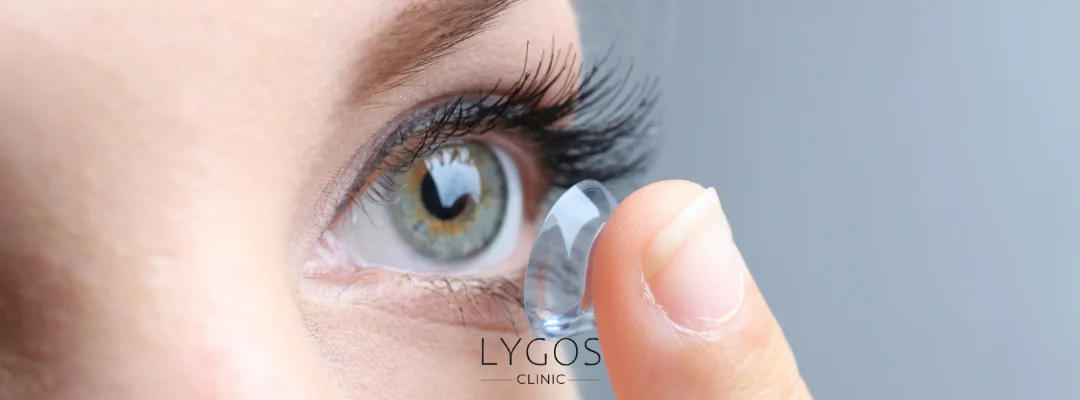Why Does Heterochromia Occur? | Causes of Heterochromia

Chose Your Topic
Why Does Heterochromia Occur?
The eyes are among the most striking organs, shaping a person’s facial expressions and character. In some people, the color of the eyes differs—meaning one eye has a different shade than the other. This condition is called heterochromia. So, why does heterochromia occur, and is it dangerous for our health? This article answers all questions about heterochromia.

What is Heterochromia?
Heterochromia is the condition in which a person’s irises have different colors. This difference can be present from birth or develop later. For example, one eye may be blue while the other is brown, or a single eye may show different shades of color. Heterochromia is generally considered an aesthetic feature, but in some cases, it can indicate underlying health issues.
The question of why heterochromia occurs is often explored in eye health and genetic research. The pigment melanin, which determines eye color, plays a key role in heterochromia. Differences in melanin levels affect the shade of the eyes, and certain genetic or environmental factors can also lead to heterochromia.
Types of Heterochromia
Heterochromia can be classified in different ways. It is generally observed in three main types:
- Complete Heterochromia: In this type, one eye is entirely different in color from the other. For example, one eye may be completely blue while the other is completely brown. Complete heterochromia usually occurs from birth and is related to the individual’s genetic makeup.
- Partial (Segmental): Heterochromia In partial heterochromia, a single eye contains two different colors. For instance, the upper part of the eye may be brown, while the lower part is green. This type is rarer and usually results from localized differences in melanin distribution.
- Central Heterochromia: In central heterochromia, the center of the iris (around the pupil) is a different color from the outer part. Central heterochromia generally appears as an aesthetic variation and does not usually cause serious health issues.
When discussing why heterochromia occurs, it is important to consider which type is present, as each type may have a different mechanism of formation.

Causes of Heterochromia
Both genetic and environmental factors can contribute to heterochromia. Major causes include:
- Genetic Factors: Congenital genetic mutations are the most common cause of heterochromia. Certain genes affect melanin production and distribution, leading to differences in eye color. For example, genetic disorders such as Waardenburg syndrome can cause heterochromia.
- Postnatal Factors: Sometimes heterochromia develops after birth. Newborns’ eye colors may change over time, and heterochromia can emerge during this process.
- Injuries and Trauma: Eye injuries can damage the iris tissue and result in heterochromia. For example, damage to pigment cells in the eye can change its color.
- Diseases: Certain eye and systemic diseases play a significant role in heterochromia. For example, Horner syndrome, Fuchs heterochromic iridocyclitis, or pigmentary glaucoma may present with heterochromia.
- Medications and Chemical Exposure: Some drugs, especially eye drops, and chemical substances can alter iris pigmentation. This is usually observed after treatment.
Is Heterochromia Genetic?
Genetic factors are one of the most common reasons heterochromia is studied. Yes, heterochromia can often be genetic. If family members have heterochromia, it may appear in future generations as well. Genetic heterochromia alone is usually not a health problem and is mostly considered an aesthetic trait.
Genetic heterochromia is directly related to the distribution of melanin in the eyes. Certain gene mutations can alter melanin production or distribution, leading to heterochromia. Syndromes such as Waardenburg syndrome commonly exhibit heterochromia.
Is Heterochromia Dangerous for Eye Health?
Heterochromia is usually harmless and does not negatively affect eye health. However, in some cases, it can indicate an underlying health issue. For example, heterochromia that develops later in life may signal an eye disease. Therefore, sudden changes in eye color should prompt a visit to an eye doctor.
Some genetic syndromes may accompany heterochromia with other health problems, so individuals with heterochromia are advised to have regular eye check-ups.

Is There a Treatment for Heterochromia?
Treatment is usually unnecessary since heterochromia rarely poses a health risk and is considered an aesthetic variation. However, in cases of sudden eye color change or underlying disease, treatment may be needed.
For cosmetic purposes, colored contact lenses can temporarily mask heterochromia. Surgical intervention is rare and only considered in special cases. In summary, heterochromia itself usually does not require treatment and is not a serious health concern.
Heterochromia can be explained by both genetic and environmental factors. Congenital genetic factors, eye injuries, diseases, or certain medications can lead to heterochromia. Most of the time, it is harmless and regarded as an aesthetic trait. However, sudden changes in eye color should be evaluated by an eye doctor.
Heterochromia is an intriguing phenomenon that highlights the uniqueness of human eyes. Eyes of different colors are not only an aesthetic feature but also a reflection of melanin pigmentation and genetic diversity in our bodies.
Why Does Heterochromia Occur? Frequently Asked Questions (FAQ)
Most heterochromia is congenital and permanent. However, it can sometimes develop later due to eye injuries or diseases.
Yes, heterochromia can be genetic. If it occurs in family members, it may appear in future generations. Genetic heterochromia is generally considered an aesthetic variation.
Most of the time, it is harmless and does not affect eye health. However, heterochromia that develops later in life may indicate an underlying eye disease and should be checked by a doctor.
Usually, no treatment is necessary. Colored contact lenses may be used for cosmetic purposes. Surgical intervention is rare and only applied in special cases.



